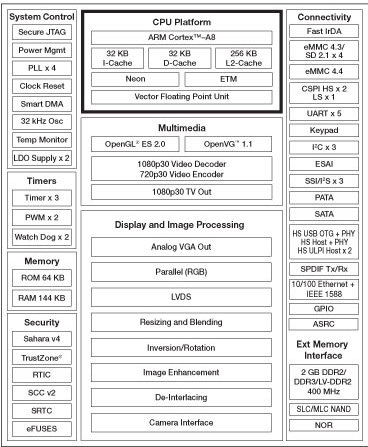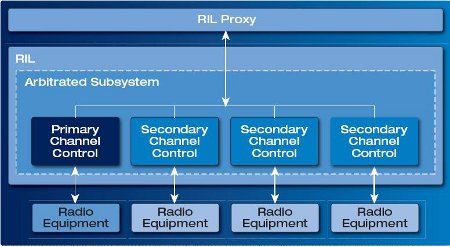Tablet reference platform builds on new Cortex-A8 SoC
Dec 28, 2010 — by Eric Brown — from the LinuxDevices Archive — 8 viewsIntrinsyc Software International announced a software reference design platform designed for tablets and other consumer devices based on Freescale Semiconductor's ARM Cortex-A8-based i.MX53 system-on-chip (SoC). The product will support capabilities found on the 1.2GHz i.MX53, including 1080p video decode and 720p video encode, via Intrinsyc's RapidRIL telephony stack and other software components, says the company.
The i.MX53 reference platform will support the development of telephony-enabled tablets, smartbooks, gaming devices, video enabled IP phones, and similar consumer devices, says Intrinsyc.
The company does not list operating system support, but now bills itself primarily as an Android specialist. Intrinsyc also notes that it does embedded development work on Apple, Blackberry, Linux, Symbian, QNX, Windows Embedded CE, and Windows Mobile platforms.
Freescale announced the i.MX53 SoC family in May, and announced compatibility with Android, Linux, Windows Embedded CE, and Chromium. The initial, consumer-device oriented i.MX535 model was expected to ship in volume in the first quarter of 2011, the same time Intrinsyc's reference platform is due for release.
Intrinsyc did not say which member of the i.MX53 family it was supporting, but it appears to be the i.MX535. In October, Freescale, announced two 800MHz automotive versions of the i.MX35 family. The i.MX534 includes dual graphics processors for 2D/3D video acceleration, while the i.MX536 adds a video processor said to be capable of 1080p decoding and 720p encoding.
Like Freescale's earlier, netbook-oriented Freescale i.MX515 SoC announced in Jan. 2009 — the first of the company's i.MX51 family of applications processors — the i.MX535 incorporates an ARM Cortex-A8 core. It was originally touted as running at up to 1GHz, but is now said by Intrinsyc to reach 1.2GHz.
The i.MX535 offers 32KB each of L1 instruction and data cache, and 256KB of L2 cache, says Freescale. The SoC is also said to provide 1080p video decode, compared to the i.MX515's 720p decode capability. In addition, it provides 720p video encode, and its HD duplex video support is touted as supporting videoconferencing.

i.MX535 block diagram
The i.MX535's integrated LVDS and support for analog TV results in output of up to 1080p video at 60 frames per second, says Freescale. Other new i.MX535 features compared to the i.MX515 include support for DDR3 memory, SATA storage, and support for four USB ports instead of the previous three. A 10/100 Ethernet controller is also supplied, among other interfaces.
According to Intrinsyc, the i.MX53 "enables hours of full HD 1080p video playback and an amazing Adobe Flash 10.1 experience."
Intrinsyc's software reference platform includes its RapidRIL telephony software, as well as Intrinsyc device management software. Technical support and custom engineering services are also provided with the reference platform, says the company.

RapidRIL architecture
In February, RapidRIL was adopted by MIPS Technologies to enable 3.5G voice telephony on MIPS- and Android-based mobile devices.
Availability
The Intrinsyc i.MX53 reference platform should be available from Intrinsyc in the first quarter of 2011, says the company. More information on RapidRIL may be found at Intrinsyc's RapidRIL web-page.
This article was originally published on LinuxDevices.com and has been donated to the open source community by QuinStreet Inc. Please visit LinuxToday.com for up-to-date news and articles about Linux and open source.